
A Price Worth Paying (part 2 of 3)
July 21st, 2017
(Part 1, Part 3)
I tallied four separate singing Northern Waterthrushes over the course of my hike, the most I've ever heard in one day. (Saw none of them. Par for the course with Northern Waterthrushes.) And indeed, what I could see through the trees looked like waterthrush paradise, for much the same reason it was mosquito paradise: abundant, pristine standing water and gently flowing water. Somewhere in there, a little streaky brown bird was walking along the water's edge, tail bobbing, searching for aquatic insects and crustaceans or maybe even wading into the water to snap up minnows. But I could only imagine it, not see it.
After awhile I came to a spot where swampy woods gave way to a large, open wetland. It appeared a grassy marsh at first glance, but the presence of what looked like bog cotton suggested otherwise. These are the snowy-white tufts that blanket Mer Bleue bog in late spring and summer, giving the landscape a strange, almost alien beauty. They did not blanket this place, but that there were any of them was very suggestive. This was no mere marsh, and there might be things to see that I don't see often.

Bog Cotton?
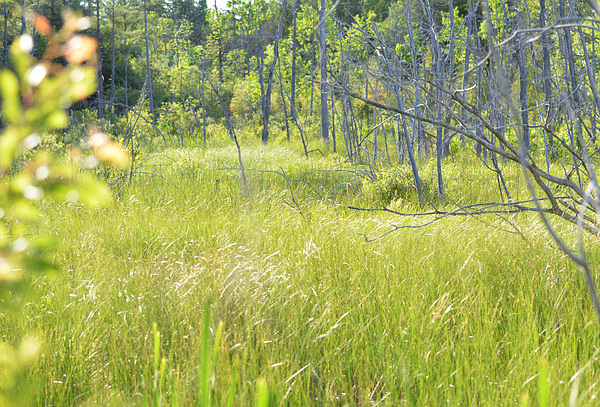
It was on the margin of this wetland that I found my first in-bloom Showy Ladyslipper.

Showy Ladyslippers are somewhat variable wildflowers. They can grow up to two feet tall and may have striking, deep pink highlights on the white slippers. This one was on the small and pale side, but beautiful nonetheless. I was thrilled to find it. I searched for more, but it was the only one I could see. Its presence suggested that the wetland was in fact a fen (neutral-to-alkaline and fed by groundwater), which in turn suggested that the "Bog Cotton" was actually its relative, Slender Cottongrass. (I'm rather out of my depth here. I'd love to take a field botanist along with me on this hike!)
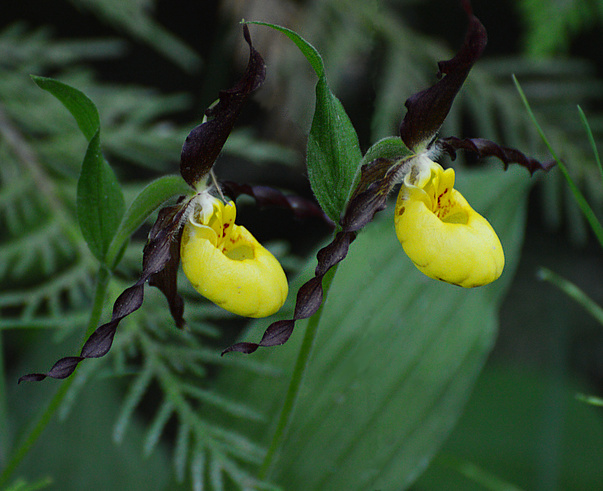
These little beauties also grew on the margins of the wetland. The very dark, purplish lateral petals mark them, I think, as a variation known as Small Yellow Lady's Slipper (Cypripedium parviflorum var. makasin). Compared to the larger and more common variety, these are about half the size and prefer wetter habitat, particularly fens and bogs.
A Price Worth Paying (part 1 of 3)
July 18th, 2017
(Part 2, Part 3)
Back to Marlborough Forest on June 14th. This time, instead of taking the usual loop around Roger's Pond, I decided to explore the vast network of forest roads. (By "vast", I mean that if you keep going down some of those roads, eventually you won't be in North Gower any longer. Snowmobilers use them.) It turned out to be a wetland wildflowers kind of day, with a big surprise at the end.
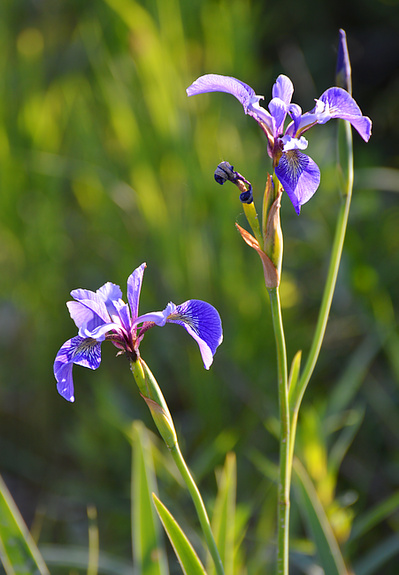
My route took me through swampy woods decked out with these magnificent Blue Flag irises. The first few were wilted and past-prime, but it seemed the further along I got, the better they got. Blue Flag inhabits a variety of wetlands, from marshes to wet meadows to streambanks.
My route also took me through mosquito paradise. (Their paradise. Not mine. So not.) One of the challenges of being a backwoods nature-watcher is that DEET literally melts plastic. I've already destroyed one set of binoculars with it and warped the focus ring on my zoom lens. On this day I managed to keep going without it for some time, through sheer bullheaded stubbornness, but eventually gave in. I'd rather let DEET slowly devour my equipment than let the mosquitos and deer flies slowly devour me.
At any rate, it was worth it. Marlborough Forest is a place where you learn that you can't have the beautiful parts of nature without the biting, stinging parts of nature. It's all one.
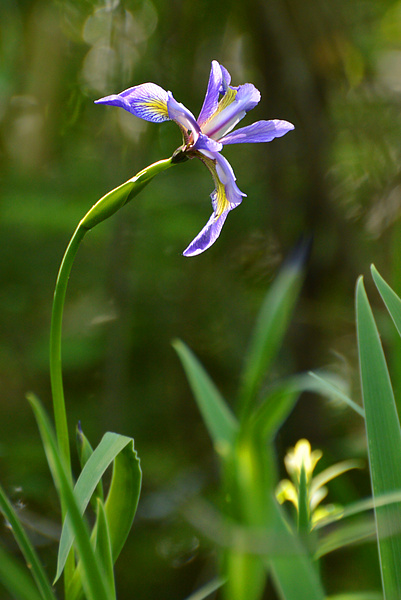
I received approximately 1,000,000 mosquito bites while taking this photo.
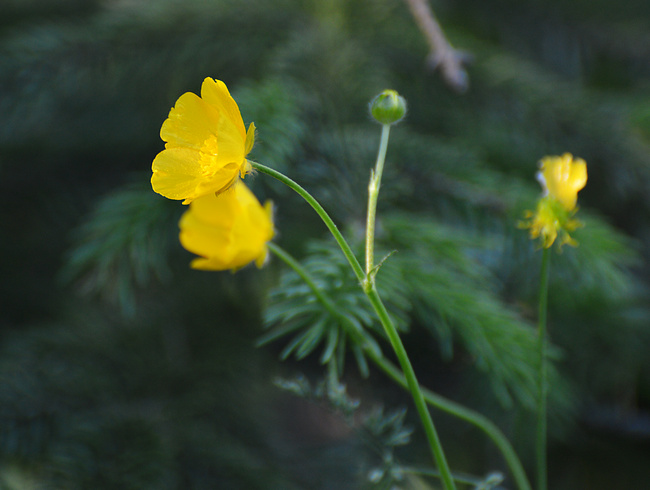
Common Buttercup

Hello. I understand that Cedar Waxwings like to eat flying insects. Could you please eat some of these flying insects? Kthx.
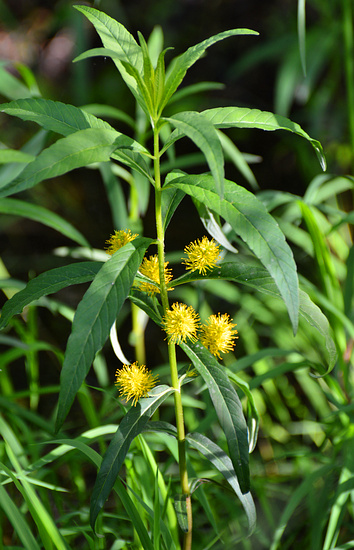
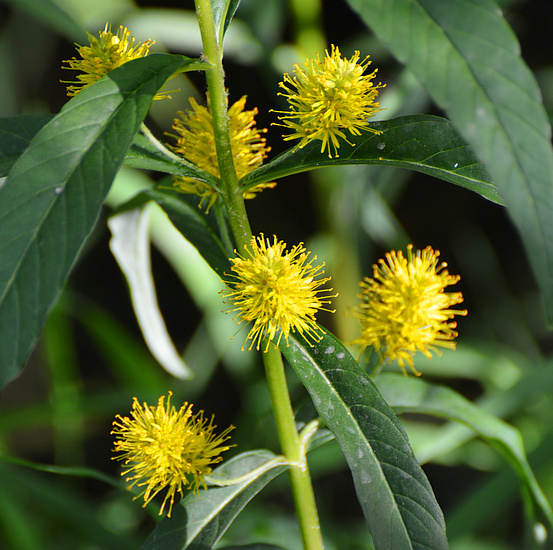
This was growing in standing water. My first thought was that the strangely-placed yellow clusters were some sort of foreign growth on the plant, but a closeup revealed the peduncles anchoring them to the stem. I couldn't find this one in my Peterson's field guide--which turned out to be because it wasn't in there, oddly enough. It's called Tufted Loosestrife. Unlike the familiar, invasive Purple Loosestrife (to which it is not closely related), it's a native North American wildflower that occurs only in natural wetlands.
Dragonflies Save The Day
July 11th, 2017
At Roger's Pond on June 12th, a sweltering hot day was drawing out the deer flies. They swarmed me, buzzing annoyingly (mostly not biting, but the ones that did left bites that still itched two weeks later.) But then the most marvelous thing happened...the cavalry arrived.
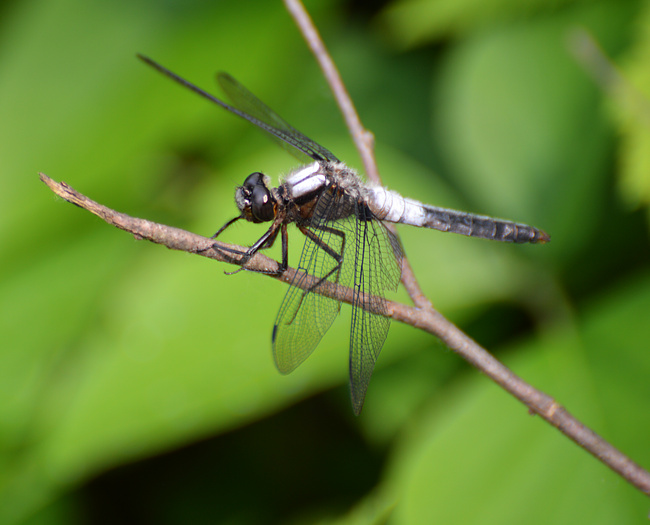
My hero
I walked into a wide-open sunlit spot that teemed with Chalk-Fronted Corporals (above), American Emeralds and other dragonflies, and in an instant they were all around me, picking off flies. I can think of few sounds more welcome and satisfying than that *whizz* of a dragonfly zipping past your head as it snatches its prey...a very loud noise followed by blessed silence.
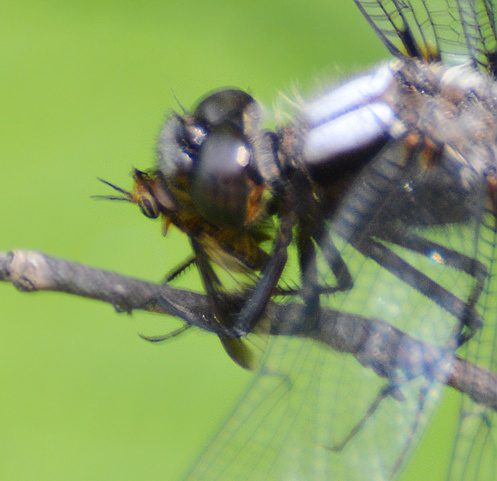
One less deer fly!
It ended up being largely a dragonflies kind of day, as all the birds seemed to be sheltering from the heat.
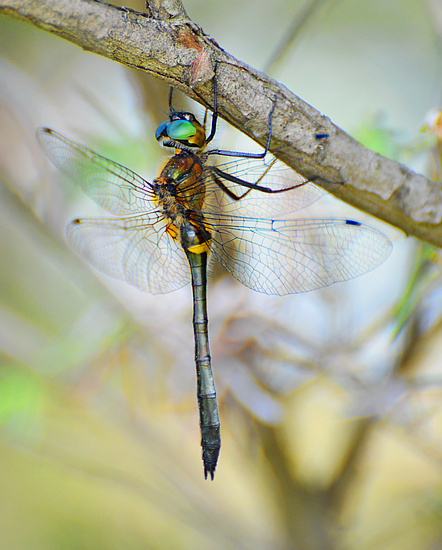
American Emerald

This one caught my attention when it whizzed by and snatched a tiny insect that I was trying to photograph. Annoyance gave way to interest when I noticed how petite it was. I was hoping for an Elfin Skimmer, a dragonfly so small that it is sometimes mistaken for a bee. But it wasn't quite that petite. With the help of the Ottawa Odes group, I learned that it was my first Frosted Whiteface.

dragonfly habitat

Garter Snake
Birds and Orchids (part 2)
July 6th, 2017
(Part 1)
After our stop to see the Ram's Head Ladyslippers, we went to Murphy's Point Provincial Park in Perth. This is a beautiful park on the shore of Big Rideau Lake with a rather Carolinian feel to it (including, sad to say, a rather Carolinian population of ticks, I pulled one off me during our walk.) It produced our big surprise of the day. We were birding the Silver Queen Mine Trail when Jon shouted that there was a White Pelican in flight and to get our binoculars and cameras ready. I couldn't believe my ears--I thought he must be mistaken--but then I got a clear view of it. A White. Pelican. Little over an hour away from where I live.
My photos came out overexposed (the exposure having been set for a cute moth I was photographing close to ground, more on him later!) and I was bummed. But then, as if our jaws hadn't dropped enough, the pelican flew back into view and right over our heads. This time I was ready.
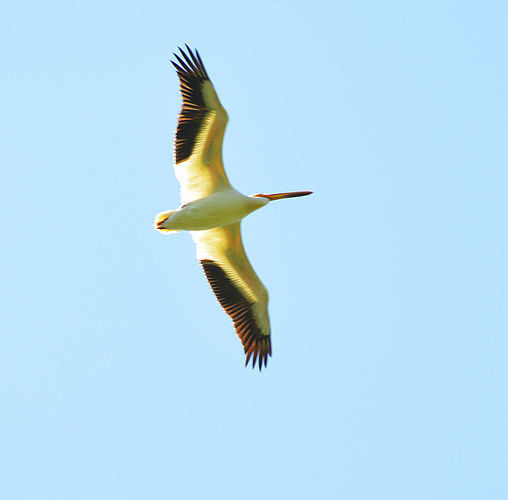
When we first arrived, the park staff asked us to let them know if we found any rarities for the park. We found not merely a rarity, but a bird that is a second-ever for all Lanark County, in recorded history. White Pelicans are a western species whose breeding range touches only the extreme western tip of Ontario. This would have been a very lost, late spring migrant! It is an Ontario-first and a second-ever bird for me.
Other than that, my photo set from this trip might better be termed "insects and orchids." I saw plenty of good birds, but most of them too far away for my lens to capture at all well. (I envy those with steady-enough hands to shoot 500mm handheld!)
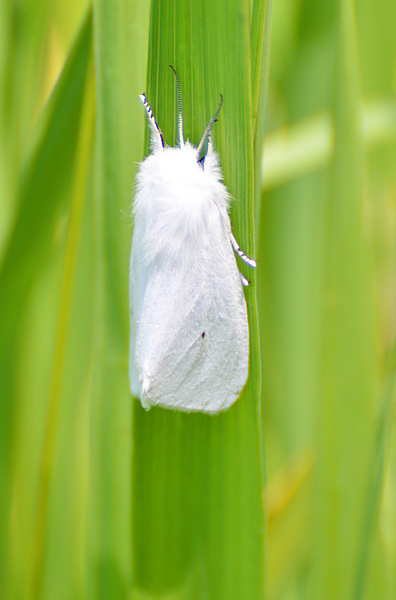
A kind of adorable furry-headed moth I found on some low vegetation. I think it's an Agreeable Tiger Moth. (That being, of course, a close relative of the Disagreeable Tiger Moth and the Cantankerous Tiger Moth. Okay, maybe not.) A lifer insect for me, to go with my lifer wildflower (Ram's Head Ladyslipper), lifer reptile (Rat Snake), and pretty-darn-close-to-lifer bird!
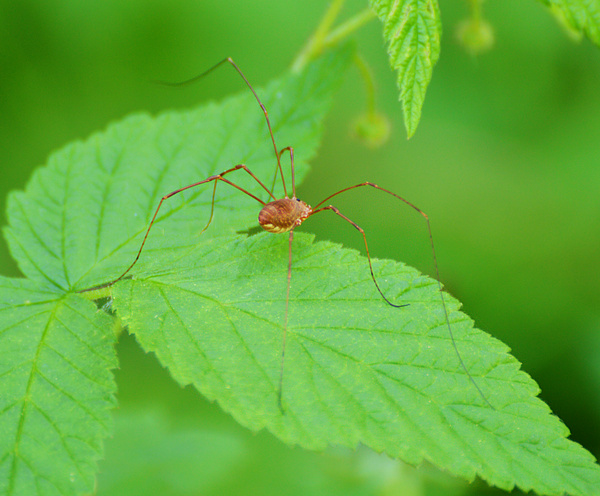
A daddy longlegs, more properly called harvestman. Harvestmen are not spiders and are harmless to humans. I've loved them since I was a child.
Our final stop of the day was Purdon Conservation Area, famous for its thriving colony of a large, beautiful wild orchid, the Showy Ladyslipper. But we arrived to find the orchids not yet in bloom. The many tall shoots promised an incredible show once they are. I plan to go back on my own (and/or with Michael) in late June, when they should be at peak. The carnivorous Pitcher Plants were also not much to look at yet. But there were a few wildflowers worth photographing.
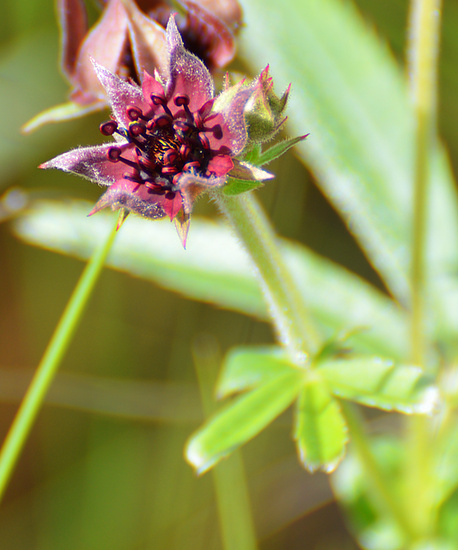
Swamp Cinquefoil

Starflower
I've noticed quite a few tent caterpillars in Ottawa this spring, but that's nothing compared to Lanark County. Sites we visited had an infestation of epic proportions, with tents and caterpillars everywhere you looked. In the trees, in the bushes, on the ground, on your backpack, on your head. The deposit box for park fees at Murphy's Point had a mass of a few dozen crawling atop it. At one spot on the trail, we heard a sound like gentle, pattering rain coming from the woods. I learned what it was the next day on Wikipedia. It was the sound of umpteen caterpillar fecal pellets falling from the treetops.
Tent caterpillars are shunned by most birds, spiny as they are, but the North American cuckoos (Black-Billed Cuckoo and Yellow-Billed Cuckoo) eat them with relish. Quoting from Life Histories of North American Birds by Arthur Cleveland Bent:
No caterpillars are safe from the Cuckoo. It does not matter how hairy or spiny they are, or how well they may be protected by webs. Often the stomach of the Cuckoo will be found lined with a felted mass of caterpillar hairs, and sometimes its intestines are pierced by the spines of the noxious caterpillars that it has swallowed. Wherever caterpillar outbreaks occur we hear the calls of the Cuckoos. There they stay; there they bring their newly fledged young; and the number of caterpillars they eat is incredible. [...] When, in time, the inside of the bird's stomach becomes so felted with a mass of hairs and spines that it obstructs digestion, the bird can shed the entire stomach-lining, meanwhile growing a new one.
Yes, really. Cuckoos are so specialized to a diet of spiny caterpillars that they have evolved the ability to shed and regrow their entire stomach lining.
So it was a surprise to not see a single one amidst this massive infestation! Not even in what looked like ideal habitat. I'd certainly seen more cuckoos this spring in Ottawa than ever before. Before I'd even noticed the caterpillars, the tents, before it was on the public's radar that we were having an infestation, the cuckoos had noticed. I saw a pair of them together at Nortel wetland in May, a third at Shirley's Bay the day after that. These are elusive birds; it is abnormal (wonderfully abnormal) to see so much of them! But our Lanark outing came up empty, the only two of our target species that we missed entirely. They were undoubtedly there, but remained unseen and unheard.
So I had to content myself with photographing the prey, not the predator.
( More (Tent Caterpillars, Northern Mockingbird, Upland Sandpiper) )
Birds and Orchids (part 1)
July 1st, 2017
On the 8th of June I joined Jon Ruddy and a small group of nature enthusiasts for his "Birds and Orchids" tour in Lanark County. One of the highlights was a trip to see a small Ram's Head Ladyslipper colony. You may recall mention of these rare orchids in one of my recent posts. "Small" is normally the only kind of Ram's Head colony you find, as they are rare wherever they occur. (A freak exception is a quarry in Arnprior boasting a colony of at least 150,000 of them. No one, including professional naturalists, understand why they are there.)
I had searched the Burnt Lands alvar (a known spot) for them on several occasions, but they eluded me. Now I learned why, or part of why, they are so elusive: Ram's Head Ladyslippers are tiny hidden beauties. Their "slippers" are about a centimeter and a half wide. At a glance they look like withered, past-their-prime flowers. Like nothing-much flowers. You can't even see their colors from a high angle. You have to get down low and close, and that's when the secret unfolds.
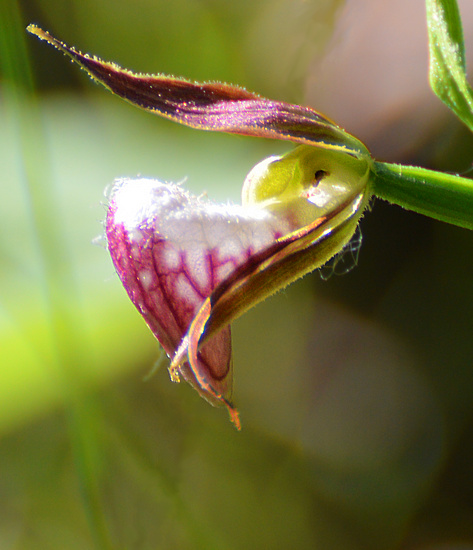
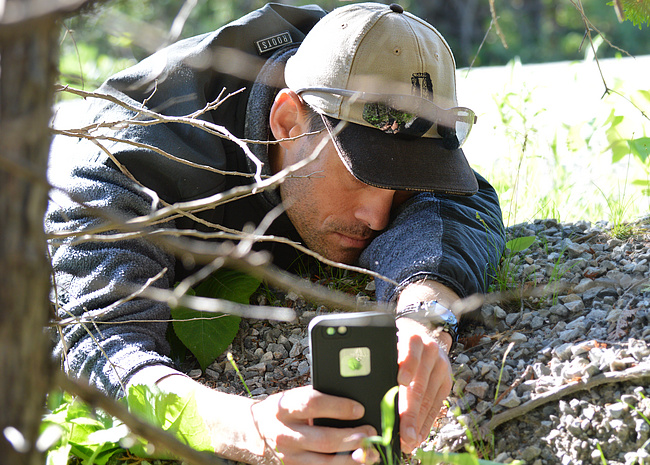
Jon photographing one of the tiny beauties
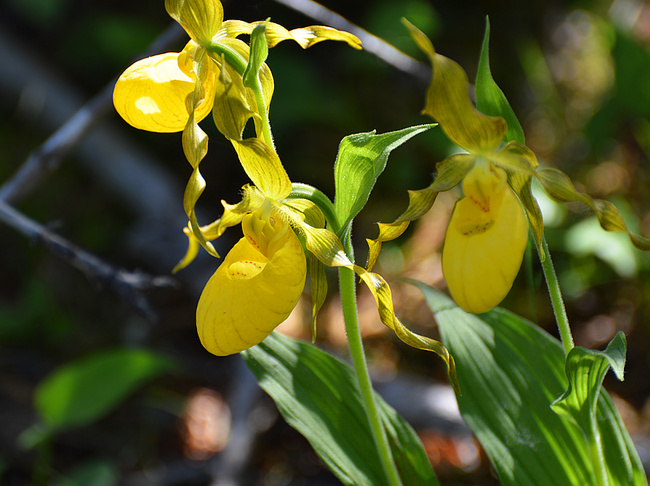
Yellow Ladyslippers grew in abundance, in clusters on the roadside. Fringed Polygala was likewise abundant, growing in the shadow of the cedars right beside the Ram's Heads. (This suggests to me that I should take a closer look at that spot in the Burnt Lands where I found Polygala. Hope I can re-find it!) This is a low-growing plant, but the polygala blossoms around the orchids almost seemed trampled, which suggested to me that this "secret" spot might not be so tightly guarded of a secret.
That's what my left brain thought, anyway. To my more romantic side, the carpet of delicate, deep pink blossoms completed the image of a fairy glade decked out for a party.

Postscript: Hiking in a different area the very next day, what should I find but two perfect Ram's Head Ladyslippers! The setting, based on what I'd learned the day before, was perfect--sunlight dappled by overhanging cedars, a floor of grass and conifer needles, Fringed Polygala and Yellow Ladyslippers growing nearby--but I'd never heard to look for them there. It was a stunning surprise.
Eastern Towhees and the Killdeer show
June 27th, 2017
In the early morning of the 7th the Burnt Lands were alive with the sound of towhees. From one spot I could hear three males singing! I'm accustomed to seeing these handsome, red-eyed sparrows only at Carp Ridge. It seems Burnt Lands may be an even better place to find them.
The nearest male tolerated me close enough for some pictures.


In previous recent outings to this park, I searched in vain for adorable Killdeer chicks. It was obvious Killdeer bred in the park--they were all over the open alvar and got agitated when I approached, scolding and doing broken-wing and fake-nest displays. But I couldn't find any chicks. This time I found out why: the Killdeer chicks were already Killdeer teenagers! At a glance they looked just like their parents. It took a closer view to reveal the subtle marks of immaturity: scruffy plumage, eyes a little paler and less colorful. This one didn't seem able to fly just yet.

Mom or dad trying to draw me off:


"This is totally my nest."

"Did I say that was my nest? No, this is my nest. Yep, tasty killdeer eggs right this way."

"Is she still there?"
( More (crane fly, columbine) )
Orchid-hunting in the Burnt Lands
June 23rd, 2017
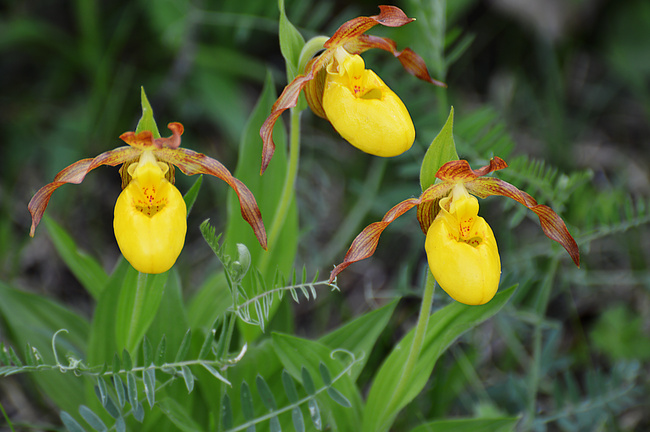
"The Three Sisters", yellow ladyslippers in bloom on the Burnt Lands alvar
In early June I made several trips out to the Burnt Lands near Almonte, hunting for orchids. For being a provincial park, this area is surprisingly unknown and unmarked, but it is an ecological gem. Last August I found it teeming with Aphrodite Fritillaries and other interesting insects (1, 2). I promised myself that for 2017, I'd go earlier in the year and seek out the elusive Ram's Head Ladyslipper, one of the rarest orchids in North America.
Last summer my usual access to the park was via Ramsey Concession 12. The maintained road ends and turns into a dirt road through the park. I found it quite hikable with only the occasional shallow puddle. However, last summer conditions were droughtlike, and conditions this year have been anything but, not to mention it's June, not August. The dirt road was so flooded (by the adjacent wetland) that even my tall rubber boots were not enough to get through it. Fortunately, there's another access at March Road and Golden Line that requires only a good set of water-resistant hiking boots.

The sign reads, "this roadway is not up to municipal standards." You don't say.
Unsurprisingly, the elusive Ram's Head Ladyslippers eluded me. But Yellow Ladyslippers certainly didn't! I found whole colonies of this beauty, most growing in the shadow of cedars and spruces, a few out in the open.
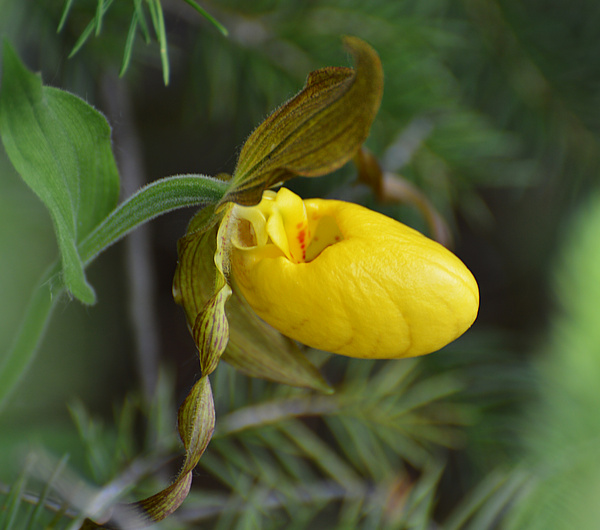
Sharing habitat with some of the Yellow Ladyslippers were patches of the most intensely blue violets I had ever seen. I wasn't sure if they were just unusually vivid common violets or something more exotic, but the fact that they hung close with the ladyslippers seemed significant. On a trip with my husband, he looked them up in our Peterson's and determined that they were indeed something a little more exotic: Northern Bog Violet. Unfortunately, my photos failed to do justice to that otherworldly blue, so I deleted them.
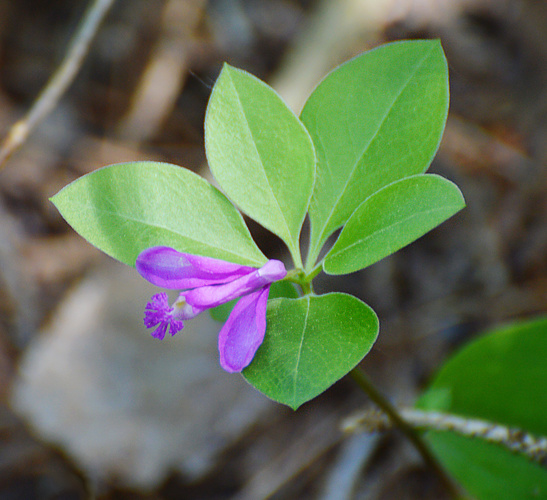
Fringed Polygala
These little beauties brightened the forest floor beneath a stand of pine trees. When I saw them I was sure I had found my second orchid of the day. They were even there in one of the orchid color plates in Peterson's, but the label said "not an orchid." D'oh! They're also known as Gaywings. The habitat I found them in (coniferous, moist) was very classic.
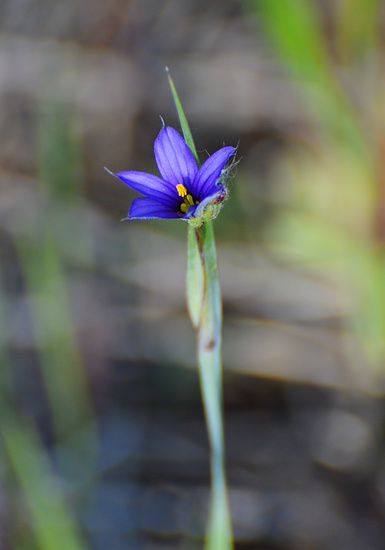
Blue-Eyed Grass
A characteristic wildflower of prairie-like habitats, this grows in the more open parts of the alvar. Though it looks like grass topped with tiny blue blossoms, it's actually part of the iris family.
( More (Wild Columbine, Blue Flag, Trumpet Honeysuckle, Seneca Snakeroot) )
Wildflowers and booming nighthawks at South March
June 18th, 2017
On May 27th I hiked the west loop of South March Conservation Forest. With the filling out of the trees, the spring ephemerals had faded--just a few lingering and wilting White Trilliums. But a fresh crop of beauty had sprung up to replace it.

1680x1050 wallpaper
Pale Corydalis grows in rocky clearings in places like South March (especially the rugged west side of it) and the Carp Ridge barrens. It is one of my favorite wildflowers. The blossoms are very small and delicate, though--you have to really get down close to appreciate their beauty.

Wild Columbine, wallpaper available

Wild Columbine

Canada Mayflower, wallpaper available

A male Rose-Breasted Grosbeak surveys his territory. South March is one of the best places in Ottawa to see these beautiful birds in their nesting habitat.
( More (Common Nighthawks, birding the tracks) )
Spring On The Rideau
June 13th, 2017
On the 19th of May I hiked the Rideau from Billings Bridge to the Hogs Back falls, photographing as I went. At Mud Lake a few days prior, I had noticed Canada Geese acting nervous and expectant around their nests. So I wasn't surprised on Friday to see this!

1680x1050 wallpaper
The surprise of the day was a different kind of goose, a Brant. It is normal to find this small, coastal/tundra goose in Ottawa in migration, but I'd never seen one on the Rideau before. It was near Carleton university.
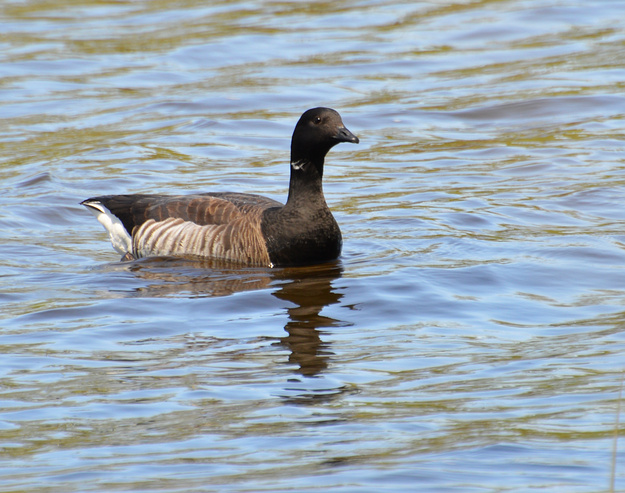
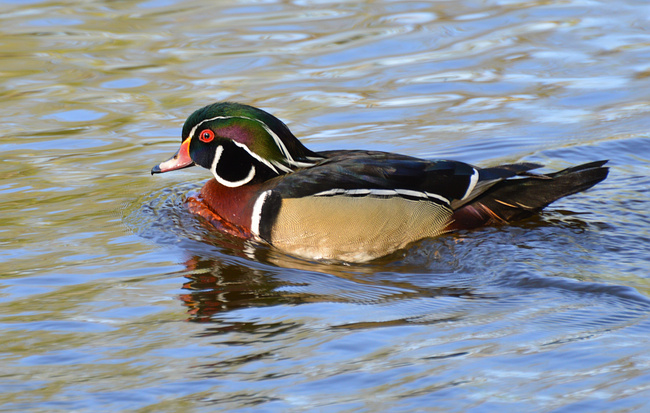
A drake Wood Duck--although you all probably know this one by now :-)

Northern Cardinal, wallpaper available

1680x1050 wallpaper
I love tulips. Who needs a composition when you have colors like that?
( More (Ring-Billed Gull, Red-Eyed Vireo) )
Living Color on the Eardley Escarpment (part 2)
June 4th, 2017
(Part 1)
As I was hiking back I heard the distinctive "chick-burr" of a Scarlet Tanager. Scarlet Tanager is an amazingly red little bird (the males are red, that is, females are yellow) that, frustratingly, spends almost all its time at the tops of tall, leafy deciduous trees. I enjoy them through binoculars every year, in places where they breed (South March Highlands, Gatineau Park, and even parts of Stony Swamp), but never once have I gotten a photo worth showing. But as I reached the spot where the "chick-burr" was coming from, I was delighted to see a male tanager swooping down low...and then amazed when he came lower, and lower, until he was actually on the ground! I think that he was likely guarding his mate as she gathered nest material. I can think of no other reason for a Scarlet Tanager to go to ground.
Of course I took pictures. He was distant and tricky to get in focus--and photos never entirely do justice to this bird (ideally you need to be there, with a good set of binoculars, looking up at the reddest thing you ever saw, a bird that honestly seems to glow red, thinking "my god, am I in tropical South America or am I still in Canada?") But these are certainly the best adult male photos that I've ever obtained.


Surprise number two happened further back down the trail, when I came to a spot where the underbrush was just positively alive with very tiny, very fast-moving creatures. There were many small openings in the brush, at the base of a tree trunk, under logs, etc., and they darted in and out of those openings at the speed of light, never in view for more than a fraction of a second. I struggled to even see them clearly, much less photograph them.
Finally, I pointed my camera at one of the tree holes that they were scurrying in and out of, and rapid-fired my shutter, producing about twenty pictures of an empty hole and one picture of this! (To give an idea of scale, the hole was maybe an inch and a half wide.)

That's a shrew--one of the tiniest mammals in the world, even smaller than a mouse. Shrews aren't rodents, but miniature carnivores, most closely related to moles, who eat insects, spiders, amphibians, small rodents, and even other shrews. Their frenetic activity and voracious appetites are supported by a super-charged metabolism which rivals that of a hummingbird: a shrew can starve to death within a few hours without food.
Sadly, there are a number of lookalike shrews in Ontario so there is no way to determine the exact species of this one. The likely candidates, I'm told, are Smoky Shrew, Common Shrew, and Short-Tailed Shrew.
|
